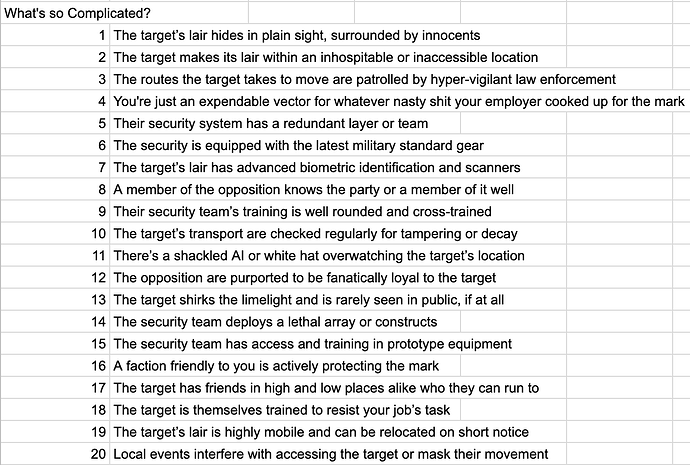I’ve been giving a fair bit of thought and research into how to keep the flow of games rolling but with enough space to breathe, and I think I’ve got some terms that can be useful. This would be engineering that sits between “getting the mission” and “getting paid” (aka the action of the mission). Transit and Conflict scenes would be woven together all towards the resolution of the central tension’s main conflict.
-
Transit Scenes: Transit scenes have a count-down clock, transport the player character or characters from one circumstance and/or location to the next, and involve the players simply making action rolls. There is no immediate risk of danger, and no need to make reaction rolls during a transit scene, because the any threat is offloaded until the end. It is not a question of “will they or won’t they” but of “what state will they arrive in.”
-
Legwork Sequences: Legwork sequences are a kind of montaged Transit scene meant to prepare or lay the ground work for a future conflict scene by allowing for player characters to reveal vulnerabilities and complications to their score. The clock is a “best of x” clock that determines the crew’s level of preparedness for what comes next (collecting enough clues, scouting the mark’s routine while evading security, meeting contacts who can help, etc), where the result of the clock informs the position the player characters are in when it comes time to make their engagement roll.
-
Conflict Scenes: Conflict scenes have a count-down clock, happened in one location, players may make action and reaction rolls, and revolves around a singular, central conflict. This conflict has a dominant obstacle and a singular intention. It is a question of “will they or won’t they”, as reaction rolls may be required in response to action rolls made by the player characters, and characters are under real threat of harm and failure to resolve the conflict while on the clock.
Possible Session Procedure:
- Initiation of Contract & setting the Mission Clock
- Color Scene to describe the setting - usually a sentence or two to set a mood that can be referenced throughout the following scene.
- Transit or Conflict scene
- Fill in segment of Mission Clock
- Repeat steps 2-4 until one segment remains
- Final Conflict scene where Mission Conflict is resolved
- Downtime & Mission Fallout
Thoughts?


